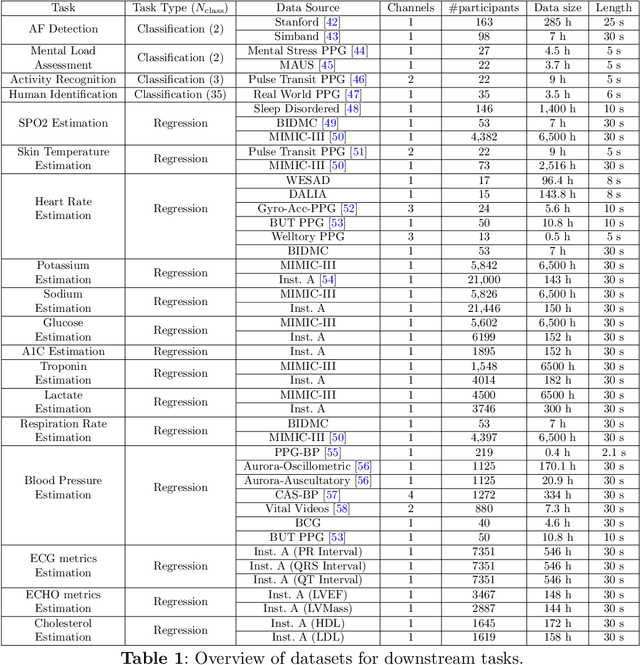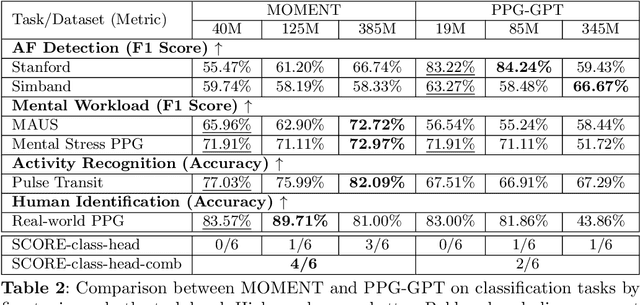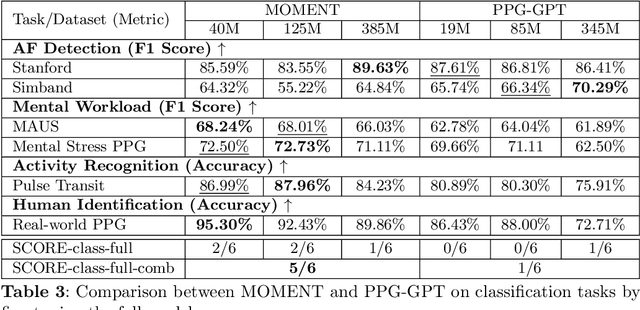Jiaying Lu
Carl
BioMedJImpact: A Comprehensive Dataset and LLM Pipeline for AI Engagement and Scientific Impact Analysis of Biomedical Journals
Nov 16, 2025Abstract:Assessing journal impact is central to scholarly communication, yet existing open resources rarely capture how collaboration structures and artificial intelligence (AI) research jointly shape venue prestige in biomedicine. We present BioMedJImpact, a large-scale, biomedical-oriented dataset designed to advance journal-level analysis of scientific impact and AI engagement. Built from 1.74 million PubMed Central articles across 2,744 journals, BioMedJImpact integrates bibliometric indicators, collaboration features, and LLM-derived semantic indicators for AI engagement. Specifically, the AI engagement feature is extracted through a reproducible three-stage LLM pipeline that we propose. Using this dataset, we analyze how collaboration intensity and AI engagement jointly influence scientific impact across pre- and post-pandemic periods (2016-2019, 2020-2023). Two consistent trends emerge: journals with higher collaboration intensity, particularly those with larger and more diverse author teams, tend to achieve greater citation impact, and AI engagement has become an increasingly strong correlate of journal prestige, especially in quartile rankings. To further validate the three-stage LLM pipeline we proposed for deriving the AI engagement feature, we conduct human evaluation, confirming substantial agreement in AI relevance detection and consistent subfield classification. Together, these contributions demonstrate that BioMedJImpact serves as both a comprehensive dataset capturing the intersection of biomedicine and AI, and a validated methodological framework enabling scalable, content-aware scientometric analysis of scientific impact and innovation dynamics. Code is available at https://github.com/JonathanWry/BioMedJImpact.
Generalist vs Specialist Time Series Foundation Models: Investigating Potential Emergent Behaviors in Assessing Human Health Using PPG Signals
Oct 16, 2025



Abstract:Foundation models are large-scale machine learning models that are pre-trained on massive amounts of data and can be adapted for various downstream tasks. They have been extensively applied to tasks in Natural Language Processing and Computer Vision with models such as GPT, BERT, and CLIP. They are now also increasingly gaining attention in time-series analysis, particularly for physiological sensing. However, most time series foundation models are specialist models - with data in pre-training and testing of the same type, such as Electrocardiogram, Electroencephalogram, and Photoplethysmogram (PPG). Recent works, such as MOMENT, train a generalist time series foundation model with data from multiple domains, such as weather, traffic, and electricity. This paper aims to conduct a comprehensive benchmarking study to compare the performance of generalist and specialist models, with a focus on PPG signals. Through an extensive suite of total 51 tasks covering cardiac state assessment, laboratory value estimation, and cross-modal inference, we comprehensively evaluate both models across seven dimensions, including win score, average performance, feature quality, tuning gain, performance variance, transferability, and scalability. These metrics jointly capture not only the models' capability but also their adaptability, robustness, and efficiency under different fine-tuning strategies, providing a holistic understanding of their strengths and limitations for diverse downstream scenarios. In a full-tuning scenario, we demonstrate that the specialist model achieves a 27% higher win score. Finally, we provide further analysis on generalization, fairness, attention visualizations, and the importance of training data choice.
Longitudinal Progression Prediction of Alzheimer's Disease with Tabular Foundation Model
Aug 25, 2025Abstract:Alzheimer's disease is a progressive neurodegenerative disorder that remains challenging to predict due to its multifactorial etiology and the complexity of multimodal clinical data. Accurate forecasting of clinically relevant biomarkers, including diagnostic and quantitative measures, is essential for effective monitoring of disease progression. This work introduces L2C-TabPFN, a method that integrates a longitudinal-to-cross-sectional (L2C) transformation with a pre-trained Tabular Foundation Model (TabPFN) to predict Alzheimer's disease outcomes using the TADPOLE dataset. L2C-TabPFN converts sequential patient records into fixed-length feature vectors, enabling robust prediction of diagnosis, cognitive scores, and ventricular volume. Experimental results demonstrate that, while L2C-TabPFN achieves competitive performance on diagnostic and cognitive outcomes, it provides state-of-the-art results in ventricular volume prediction. This key imaging biomarker reflects neurodegeneration and progression in Alzheimer's disease. These findings highlight the potential of tabular foundational models for advancing longitudinal prediction of clinically relevant imaging markers in Alzheimer's disease.
KERAP: A Knowledge-Enhanced Reasoning Approach for Accurate Zero-shot Diagnosis Prediction Using Multi-agent LLMs
Jul 03, 2025



Abstract:Medical diagnosis prediction plays a critical role in disease detection and personalized healthcare. While machine learning (ML) models have been widely adopted for this task, their reliance on supervised training limits their ability to generalize to unseen cases, particularly given the high cost of acquiring large, labeled datasets. Large language models (LLMs) have shown promise in leveraging language abilities and biomedical knowledge for diagnosis prediction. However, they often suffer from hallucinations, lack structured medical reasoning, and produce useless outputs. To address these challenges, we propose KERAP, a knowledge graph (KG)-enhanced reasoning approach that improves LLM-based diagnosis prediction through a multi-agent architecture. Our framework consists of a linkage agent for attribute mapping, a retrieval agent for structured knowledge extraction, and a prediction agent that iteratively refines diagnosis predictions. Experimental results demonstrate that KERAP enhances diagnostic reliability efficiently, offering a scalable and interpretable solution for zero-shot medical diagnosis prediction.
Large Language Model Empowered Privacy-Protected Framework for PHI Annotation in Clinical Notes
Apr 22, 2025
Abstract:The de-identification of private information in medical data is a crucial process to mitigate the risk of confidentiality breaches, particularly when patient personal details are not adequately removed before the release of medical records. Although rule-based and learning-based methods have been proposed, they often struggle with limited generalizability and require substantial amounts of annotated data for effective performance. Recent advancements in large language models (LLMs) have shown significant promise in addressing these issues due to their superior language comprehension capabilities. However, LLMs present challenges, including potential privacy risks when using commercial LLM APIs and high computational costs for deploying open-source LLMs locally. In this work, we introduce LPPA, an LLM-empowered Privacy-Protected PHI Annotation framework for clinical notes, targeting the English language. By fine-tuning LLMs locally with synthetic notes, LPPA ensures strong privacy protection and high PHI annotation accuracy. Extensive experiments demonstrate LPPA's effectiveness in accurately de-identifying private information, offering a scalable and efficient solution for enhancing patient privacy protection.
Continuous Cardiac Arrest Prediction in ICU using PPG Foundation Model
Feb 12, 2025



Abstract:Non-invasive patient monitoring for tracking and predicting adverse acute health events is an emerging area of research. We pursue in-hospital cardiac arrest (IHCA) prediction using only single-channel finger photoplethysmography (PPG) signals. Our proposed two-stage model Feature Extractor-Aggregator Network (FEAN) leverages powerful representations from pre-trained PPG foundation models (PPG-GPT of size up to 1 Billion) stacked with sequential classification models. We propose two FEAN variants ("1H", "FH") which use the latest one-hour and (max) 24-hour history to make decisions respectively. Our study is the first to present IHCA prediction results in ICU patients using only unimodal (continuous PPG signal) waveform deep representations. With our best model, we obtain an average of 0.79 AUROC over 24~h prediction window before CA event onset with our model peaking performance at 0.82 one hour before CA. We also provide a comprehensive analysis of our model through architectural tuning and PaCMAP visualization of patient health trajectory in latent space.
Early Risk Prediction of Pediatric Cardiac Arrest from Electronic Health Records via Multimodal Fused Transformer
Feb 11, 2025Abstract:Early prediction of pediatric cardiac arrest (CA) is critical for timely intervention in high-risk intensive care settings. We introduce PedCA-FT, a novel transformer-based framework that fuses tabular view of EHR with the derived textual view of EHR to fully unleash the interactions of high-dimensional risk factors and their dynamics. By employing dedicated transformer modules for each modality view, PedCA-FT captures complex temporal and contextual patterns to produce robust CA risk estimates. Evaluated on a curated pediatric cohort from the CHOA-CICU database, our approach outperforms ten other artificial intelligence models across five key performance metrics and identifies clinically meaningful risk factors. These findings underscore the potential of multimodal fusion techniques to enhance early CA detection and improve patient care.
Dynamic Token Reduction during Generation for Vision Language Models
Jan 24, 2025Abstract:Vision-Language Models (VLMs) have achieved notable success in multimodal tasks but face practical limitations due to the quadratic complexity of decoder attention mechanisms and autoregressive generation. Existing methods like FASTV and VTW have achieved notable results in reducing redundant visual tokens, but these approaches focus on pruning tokens in a single forward pass without systematically analyzing the redundancy of visual tokens throughout the entire generation process. In this paper, we introduce a dynamic pruning strategy tailored for VLMs, namedDynamic Rate (DyRate), which progressively adjusts the compression rate during generation. Our analysis of the distribution of attention reveals that the importance of visual tokens decreases throughout the generation process, inspiring us to adopt a more aggressive compression rate. By integrating a lightweight predictor based on attention distribution, our approach enables flexible adjustment of pruning rates based on the attention distribution. Our experimental results demonstrate that our method not only reduces computational demands but also maintains the quality of responses.
Measuring Spiritual Values and Bias of Large Language Models
Oct 15, 2024



Abstract:Large language models (LLMs) have become integral tool for users from various backgrounds. LLMs, trained on vast corpora, reflect the linguistic and cultural nuances embedded in their pre-training data. However, the values and perspectives inherent in this data can influence the behavior of LLMs, leading to potential biases. As a result, the use of LLMs in contexts involving spiritual or moral values necessitates careful consideration of these underlying biases. Our work starts with verification of our hypothesis by testing the spiritual values of popular LLMs. Experimental results show that LLMs' spiritual values are quite diverse, as opposed to the stereotype of atheists or secularists. We then investigate how different spiritual values affect LLMs in social-fairness scenarios e.g., hate speech identification). Our findings reveal that different spiritual values indeed lead to different sensitivity to different hate target groups. Furthermore, we propose to continue pre-training LLMs on spiritual texts, and empirical results demonstrate the effectiveness of this approach in mitigating spiritual bias.
Efficient Two-Stage Gaussian Process Regression Via Automatic Kernel Search and Subsampling
May 22, 2024Abstract:Gaussian Process Regression (GPR) is widely used in statistics and machine learning for prediction tasks requiring uncertainty measures. Its efficacy depends on the appropriate specification of the mean function, covariance kernel function, and associated hyperparameters. Severe misspecifications can lead to inaccurate results and problematic consequences, especially in safety-critical applications. However, a systematic approach to handle these misspecifications is lacking in the literature. In this work, we propose a general framework to address these issues. Firstly, we introduce a flexible two-stage GPR framework that separates mean prediction and uncertainty quantification (UQ) to prevent mean misspecification, which can introduce bias into the model. Secondly, kernel function misspecification is addressed through a novel automatic kernel search algorithm, supported by theoretical analysis, that selects the optimal kernel from a candidate set. Additionally, we propose a subsampling-based warm-start strategy for hyperparameter initialization to improve efficiency and avoid hyperparameter misspecification. With much lower computational cost, our subsampling-based strategy can yield competitive or better performance than training exclusively on the full dataset. Combining all these components, we recommend two GPR methods-exact and scalable-designed to match available computational resources and specific UQ requirements. Extensive evaluation on real-world datasets, including UCI benchmarks and a safety-critical medical case study, demonstrates the robustness and precision of our methods.
 Add to Chrome
Add to Chrome Add to Firefox
Add to Firefox Add to Edge
Add to Edge